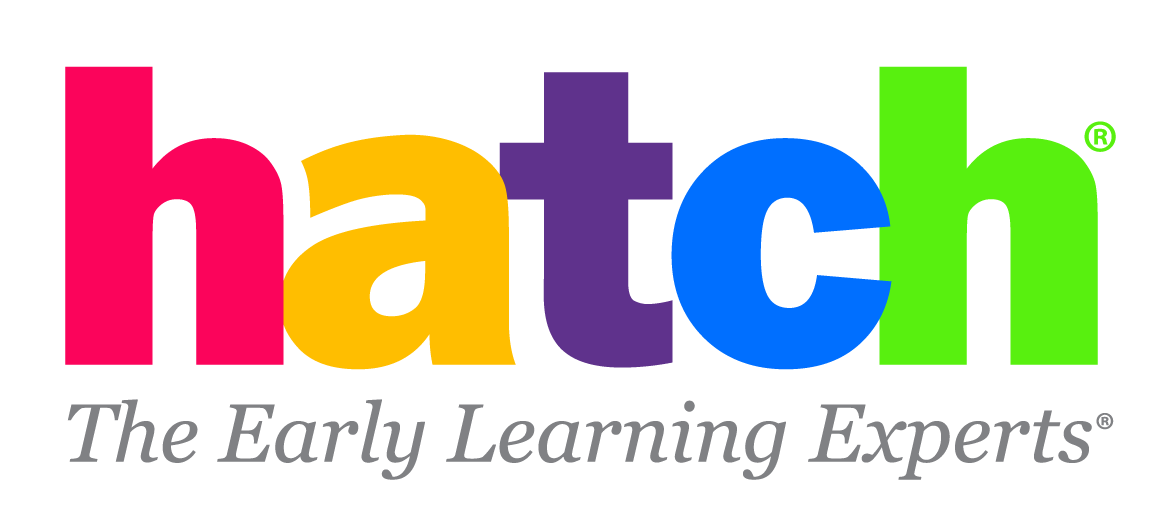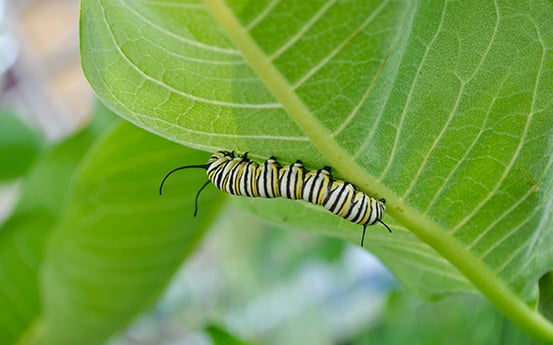Lily and her dad are playing outside in their backyard. They have been looking for bugs! Lily spots a caterpillar and, with much excitement, calls for her dad to join her.
“What do you see, Lily?” asks her dad. “It’s a caterpillar with black and yellow stripes,” replies Lily.
“It does have black and yellow stripes,” confirms her dad. “What do you notice about those stripes?”
“They go black, yellow, black, yellow,” Lily observes.
“Yes, the stripes repeat over and over – alternating between black and yellow. If the caterpillar grows a little longer, what color would be next?”
“It would be yellow.”
“How do you know?”
“Because it ends with a black stripe. It would have to grow a yellow stripe next.”
Lily and her dad continue to observe the caterpillar. Lily’s dad asks questions to help her make observations about the shape and size of the caterpillar. They compare the things that are around the caterpillar such as grass, leaves, and twigs.
Math provides language and concepts necessary to explain the world around us. Math helps us organize and understand much of daily life. Young children should continually be exposed to a wide range of mathematical concepts from an early age. Number concepts consume much of early math experiences, but math is more than counting! It includes geometry, classification, patterns, and a variety of complex thinking and problem solving.
Lily’s dad is helping her develop a wide range of math concepts by connecting math to the world around her. Through observing a caterpillar with her dad, Lily is developing math concepts and mathematical thinking skills! The intentional engagement of open-ended questions (like those asked by Lily’s dad) can build foundational skills that propel children towards lifelong success with math.
Below you will find ways to support math development beyond number concepts.
Geometry
Geometry is the study of shapes and spatial relations, including an understanding of shapes and their relationship to other shapes around them.
Important geometry skills for preschool aged children include:
- Identifying basic shapes regardless of their size or orientation
- Exploring creating and combining shapes
- Describing the location of objects
It is critical that children see basic shapes represented in a wide variety of sizes and orientations and that they can recognize these shapes in their environment.
Activities for supporting children’s understanding of geometry:
- As you and your child enjoy an outdoor walk (or, for example, time in a store), talk about the variety of shapes you see.
- Gather household objects and invite your child to sort them based on shape and size.
- Pull out a variety of art materials and ask your child to create shapes. Encourage the creation of shapes in different ways.
- Invite your child to play I Spy with statements such as, “I spy something that is under the...” or, “I spy something that is next to...” and, “I spy something that is over the...”
Classification
Classification involves sorting objects into meaningful groups based on common attributes like size, shape, and color. This cross-curricular skill is important for science and social studies, too. Classifying objects allows you to collect data, build tables and graphs, and describe occurrences in the world around us.
Important classification skills for preschool age children include:
- Describing attributes of objects
- Determining attributes by which to sort objects
- Sorting objects based on shared attributes
Activities for supporting children's understanding of classification:
- Encourage children to describe objects around them.
- Collect natural objects outside and sort them according to different attributes.
- After objects are sorted, encourage your child to sort the same objects by a different attribute.
Patterns
Patterns are the basis of algebra. Yes, ALGEBRA! The ability to fill-in and extend patterns supports the cognitive skills required to engage in algebraic thinking. Visual patterns build the cognitive skills that lead to children recognizing patterns in numbers.
Important patterning skills for preschool aged children include:
- Extending existing patterns (keeping the pattern going)
- Filling in missing pieces of a pattern
- Creating simple patterns
Activities for supporting children's understanding of patterns:
- Observe patterns in the world (flower petals, etc.).
- Create patterns with common household objects or natural objects found outside.
- Create sound patterns (clap, snap, clap, snap, etc.)
- Create “pattern dances” in which movements are repeated to create patterns.
Mathematical Thinking
Mathematical thinking encompasses reasoning and problem-solving. Young children are in the process of developing metacognitive skills, which is thinking about thinking. To foster development of metacognitive skills, we must encourage young children to explain their thinking. They are not yet able to do to this kind of thinking “in their heads,” so they must verbally process to engage in these cognitive skills.
Questions and/or prompts, like the below examples, support the development of mathematical thinking:
- How do you know that?
- Why is that?
- Tell me more about that.
- Show me why/how you know.

